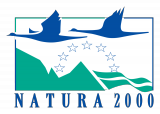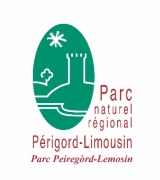Le programme pédagogique Graines de Rivières Sauvages s’...
Project objectives
Over the course of the last century, water quality in Europe has deteriorated rapidly. Consequently, aquatic species have become some of the most endangered on the continent.
This is certainly true in the case of the freshwater pearl mussel (Margaritifera margaritifera), whose numbers have dropped by more than 90% across the continent. In France, this decline has been even more marked and represents more than 99% of the population. Currently, only around 100,000 mussels remain in about 80 rivers.
The upper Dronne (Haute-Dronne) river is home to the first population of freshwater pearl mussels, with a population of around 15,000.
In Europe, this major decline in numbers can be attributed to overfishing, a deterioration in water quality and habitats, and a significant decrease in host fish populations (brown trout and Atlantic salmon) due to disruption in river continuity.
On the Dronne river, the main threats are the deterioration in water quality, the clogging of the river with substrates and disruption in river continuity. The Dronne water is of good quality, but can exceed 7 mg/L of nitrates (NO3 -), which is at the upper end of the limit in which juvenile mussels can survive (Moorkens, 2000). Habitat deterioration by clogging is made worse by physical barriers to river continuity. Indeed, upstream impoundment areas created by these barriers are often buried under deposits of fine sediment while downstream areas are often blighted by significant algal development due to an increase in water temperature and a decrease in its self-purifying properties.
In the short-term, the aim of this project is to establish optimal conditions for maintaining a population of freshwater mussels on the upper Dronne river, while the long-term goal is to enable population growth and create a viable mussel population.
To do this, restoration works will be carried out on the main barriers hindering river continuity: culverts, weirs and artificial bodies of water.
This will enable habitat restoration along the main river course and along some of the main tributaries within the Natura 2000 area. In the medium-term, this will allow the reintroduction of a wild brown trout population, which will ensure an adequate host fish population. At the same time, a rearing facility will be set up to breed freshwater pearl mussel juveniles in captivity. This breeding programme will not only help to strengthen the small population already present in the natural environment, but also help us foster an understanding of the impact of trace metals on juvenile mussels at this very sensitive life stage.
Action and implementation methods:
To reduce the threat to freshwater pearl mussels, and its host fish, the brown trout, two main actions will be undertaken:
- The first will involve habitat restoration along the main river course of the upper Dronne river, and its tributaries, to help stabilise host fish (brown trout) populations in the first instance.
This will also improve survival rates for juvenile freshwater pearl mussels at this very sensitive life stage, and will also increase population numbers through the creation of optimal physical breeding conditions. In order to clearly define the best way forward for these river continuity restoration works (dikes, weirs, culverts…), and to minimise the impact on the surrounding environment while they are carried out, preliminary studies (action A1) are paramount.
Once the best solutions have been identified, restoration works will begin on the hydraulic structures.
These works will help create favourable water flow and habitat conditions for the freshwater pearl mussel and its host fish, the brown trout.
- The second activity will involve setting up a rearing facility for freshwater pearl mussels.
Prior to this, preparatory work will be carried out to assist in the development of appropriate infrastructures for this facility (action A2). The aim of this activity is to breed around 16,000 juvenile mussels over a 5-year period to re-populate the upper Dronne river (action C3).
The re-introduction of freshwater pearl mussels into the natural environment will be carried out in areas identified as ‘favourable’ in preliminary studies (actions A3, A4 and A5) and follow-up plans will be implemented to monitor the physical and hydromorphological quality of the upper Dronne river. Alongside this, an important communication component (action E) will be implemented around the target species and works undertaken to restore river continuity.
Its goal will be to raise awareness on a local level by educating residents and stakeholders with an interest in protecting the upper Dronne river and its emblematic species, the freshwater pearl mussel.
Lessons learnt from the project will also serve to aid in the restoration of other headwaters in France and Europe, and the conservation of the freshwater pearl mussel.
Expected results
The freshwater pearl mussel has a very long life cycle. Consequently, it is only really possible to monitor population numbers over a period of more than ten years.
In adult mussels, the main cause of death is linked to rising water levels, during which some adult individuals are detached from the substrate, dragged upstream and impounded in river sections below hydraulic structures. These areas are death traps for freshwater pearl mussels which cannot tolerate substrate clogging or withstand being buried in fine sediment.
The river continuity restoration works will eliminate these death traps in freshwater pearl mussel areas.
Mussels will no longer be deposited on substrate unsuitable for their survival, but rather in diverse and well-oxygenated environments.
The restoration of river continuity, in areas dedicated to the conservation of freshwater pearl mussels, will allow optimal water flow and the development of favourable habitats for the brown trout population: an adequate number of host fish, together with a quality environment, should allow the freshwater pearl mussel to complete its life cycle in optimal conditions.
In response to the low levels of freshwater pearl mussel population growth in the upper Dronne river, 16,000 juveniles will be bred in captivity and then released into the natural environment.
To ensure the success of this release programme, studies will be carried out to assess the impact of trace metals on their metabolism.
These crystalline stretches of river contain a lot of metallic trace elements (MTEs), and due to historical exploitation of these, many toxic metals have been released into the environment (arsenic, cadmium etc.). Findings relating to the quality of the environment, and the impact of metallic trace elements (MTEs), will help us identify waterways where it would be futile to try to protect the freshwater pearl mussel – these will be areas where levels of metallic trace elements or physicochemical parameters are superior to levels supported by juveniles. On the flip side, the findings will also make it possible to identify the most favourable areas for their re-introduction and survival in the natural environment. Further studies will be carried out to gain a better understanding of the impact of environmental factors on this highly-sensitive species.
A captive-bred population of juvenile freshwater pearl mussels will also be kept as back-up in case of accidental pollution.




